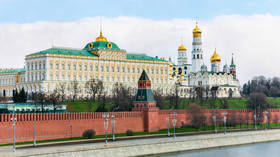Russian oil shipments surge despite production cut – Bloomberg

The average four-week seaborne shipments of Russian crude in the period to May 5 jumped by 180,000 barrels per day (bpd) to 3.63 million bpd, the highest leap since the start of 2022, when Bloomberg began tracking the flows in detail. According to the outlet’s report on Tuesday, shipments continued to rise despite Western sanctions and Moscow’s output cut.
Data has shown that four-week average shipments to Russia’s Asian customers, including those on vessels showing no final destination, rose to a new high of 3.37 million bpd in the period to May 5. That’s up by 124,000 bpd from the period to April 28, says the report.
Meanwhile, Russia’s seaborne crude exports to European countries stood at 83,000 bpd in the 28 days to May 5, with Bulgaria the sole destination. No Russian crude was shipped to northern European countries in the four weeks to May 5, the outlet wrote, adding that exports to Russia’s only remaining Mediterranean customer, Türkiye, rose to a ten-week high of 177,000 bpd.
With almost all Russia’s crude going to China and India, volumes to Asia also hit a new high, Bloomberg wrote. According to its calculations, the combined volume of crude on vessels heading to China and India plus smaller flows to Türkiye and quantities on ships that “haven’t yet shown a final destination” rose to a record 3.55 million bpd in the latest four-week period.
“Historical patterns suggest that most of the vessels currently identified as “Unknown Asia” destinations and heading for the Suez Canal will end up in India, while those loaded onto very large crude carriers off the north coast of Morocco or, more recently, in the Atlantic Ocean, will head to China,” the outlet wrote.
Russia has been diversifying its energy supplies in response to Western sanctions since the EU stopped accepting the country’s oil transported by sea.
Russian Deputy Prime Minister Aleksandr Novak stated last week that Moscow remains committed to major oil production cuts. Novak, who was responding to “speculation in the media” that there was no evidence that Moscow was implementing a production cut, argued that the media had failed to take into account a “significant reduction” in pipeline supplies to the EU, which, he said, had already dropped by more than two-thirds and were only “partly offset by maritime shipments.”
In February, Russia pledged to voluntarily reduce oil production by 500,000 bpd starting from March. The move came in retaliation to sanctions, while Moscow also halted sales to buyers that comply with a Western-imposed price ceiling of $60 a barrel.
For more stories on economy & finance visit RT's business section












